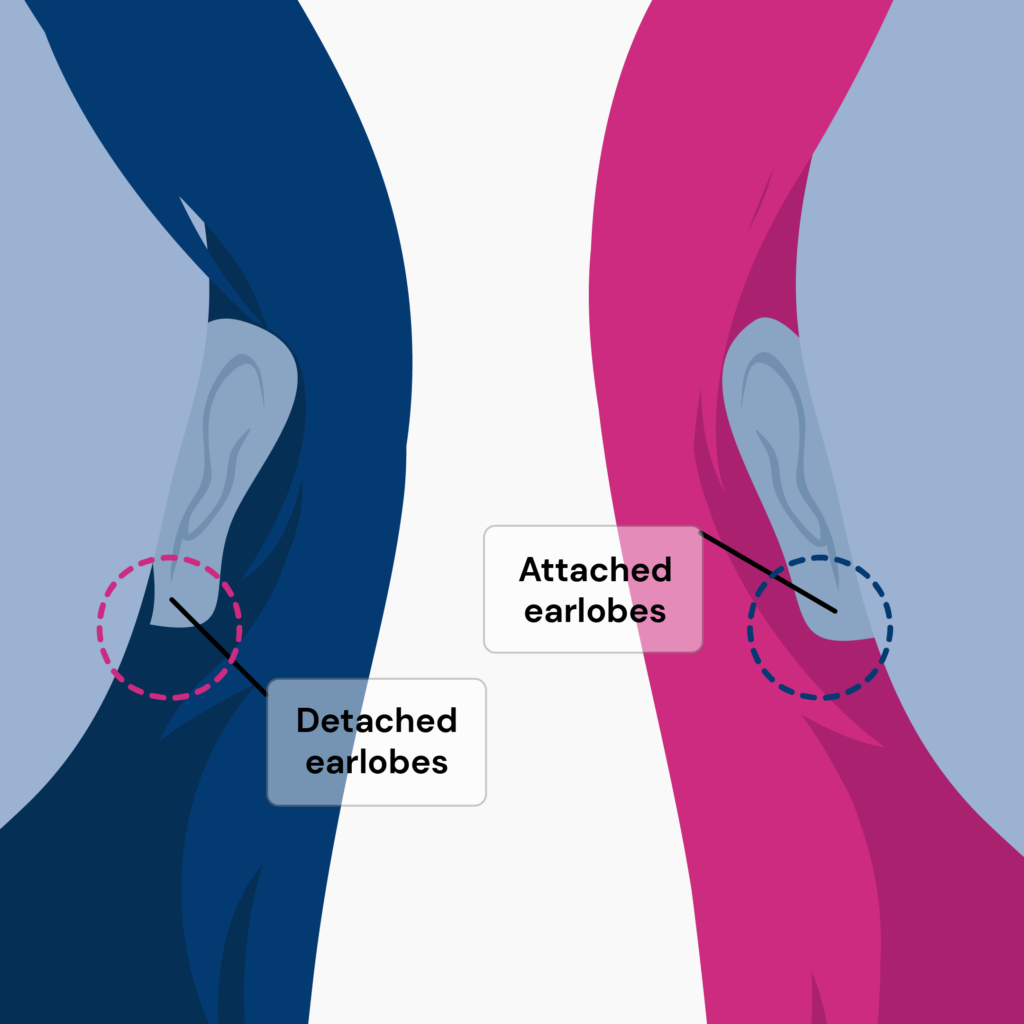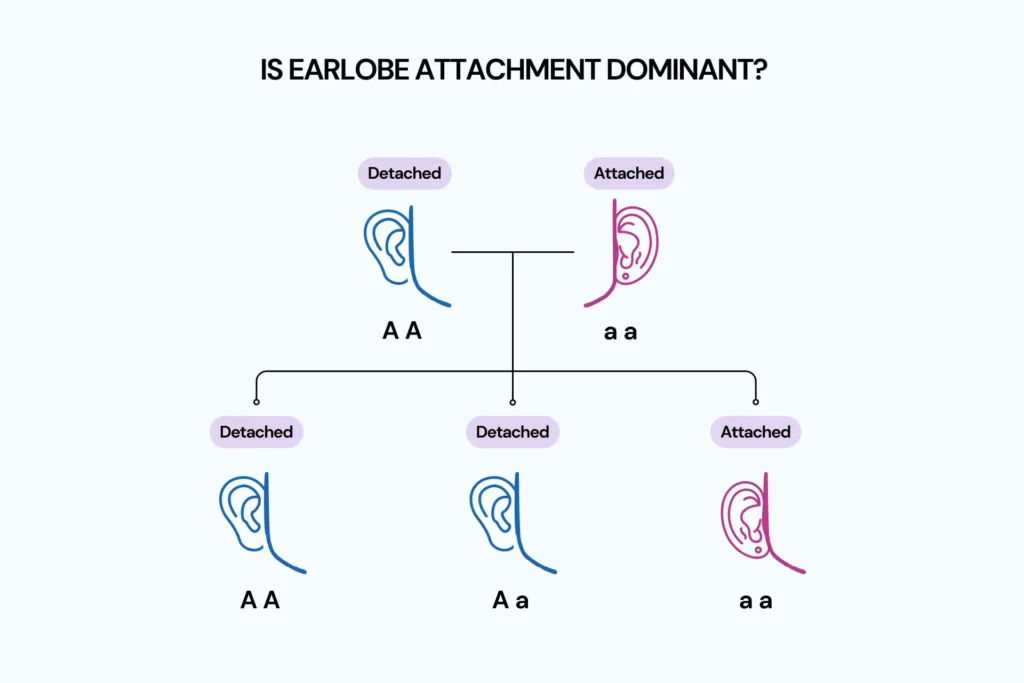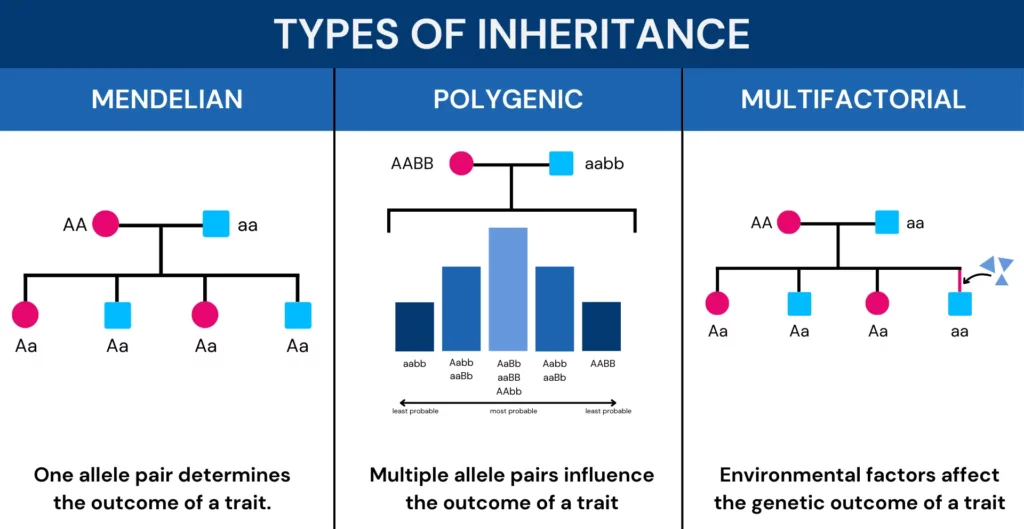It’s a common misconception that earlobes are simply either free or attached. The genetic reasoning behind earlobes manifesting as attached or detached is much more complex than we previously thought. Scientists have isolated several genetic loci and environmental factors that help form our earlobes. This article will dive into earlobe attachment and the intricate genetics responsible for those seemingly insignificant bits of skin beneath your ears.
Genetic ancestry tests are becoming increasingly popular. While your DNA can be used to learn about your roots, did you know that it can also reveal important things about your health risks and wellness aspects? This allows you to take proactive measures for health conditions, even before the symptoms appear, thereby preventing it. You can upload your DNA data to learn 1,500+ things about your health. Learn more.
Kinds Of Earlobes
Earlobes are the soft, fleshy part of the outer ear, situated beneath the ear's rim and extending towards the jawline.
Earlobes are composed of soft tissue and fat, with no cartilage, making them soft and pliable.
They can range from large and hanging down to small and hardly noticeable.
There are two main kinds of human earlobes:
- Free or detached earlobes: Earlobes that hang below the point of attachment to the head. These are more common in European and African populations.
- Attached earlobes: They are connected to the skin along their entire length and are more common in Asian and American populations.
This distinction is known as "earlobe attachment" and is a widely used example in the study of human genetics.
Can You Have Both Attached And Detached Earlobes?
Earlobe attachment is a genetic trait influenced by multiple genes,
The combination of various genes inherited from your parents determines your earlobe attachment type(attached or detached).
Most individuals have the same earlobe attachment type on both ears.
However, in rare instances, one earlobe is attached, and the other is detached.
This condition is known as asymmetric earlobe attachment.
Scientists don't fully understand the exact reasons for this asymmetry.
It's likely a result of the complex interplay of genetic and environmental factors.

Are Attached Earlobes Common?
The prevalence of attached earlobes varies globally.
- A study of people in northern India showed a 50% prevalence of attached earlobes.
- A study in central India reported an attached earlobe frequency of 19-24%.
- A general estimate of the US population reveals an attached earlobe frequency of just 2-3%.
It's important to remember that these figures are estimates, and actual frequencies may differ within specific populations.
Do Earlobes Change With Age?
Yes, earlobes can change in size and shape as we age.
Over time, ear cartilage becomes thinner and weaker, causing ears to droop and grow longer.
Earlobe fat tissue content also decreases, making them flatter and less noticeable.
Additionally, the skin loses elasticity and collagen, resulting in wrinkles and sagging.
However, your earlobe attachment trait won’t change with age.
Genetics Behind Attached Earlobes
The genetic basis of attached earlobes is complex.
Some researchers say many different genes influence earlobe attachment, while others disagree.
A recent genome-wide association study (GWAS) identified 49 genetic locations associated with earlobe attachment.
The researchers found several candidate genes, including EDAR, SP5, MRPS22, ADGRG6, KIAA1217, and PAX9.
The EDAR gene is particularly interesting because it influences the probability of having attached earlobes.
Other genes responsible for cell signaling, adhesion, and differentiation are also associated with attached earlobes.
Further research is underway into how these genes influence earlobe attachment together.
Are Attached Earlobes Dominant?
Attached earlobes are a recessive trait.
They result from the absence of a dominant allele on the chromosomes.
In genetics, traits are influenced by alleles, which are different manifestations of the same gene.
Some dominant alleles have a stronger influence than others, leading to a particular trait.
The recessive allele exerts influence when the dominant alleles are absent, enabling the opposite trait.
Let’s study a gene responsible for earlobe attachment.
There are two alleles (versions) of this gene: the dominant A allele(for free earlobes) and the recessive a allele (for attached earlobes).
The genotypes AA and Aa will result in the dominant trait, free earlobes.
The genotype aa will result in the recessive trait, attached earlobes.

In reality, the inheritance of this trait is complex and goes beyond a single gene’s influence.
Parents with attached earlobes could have children with different earlobe types.
Inheritance Of Earlobes
Most people consider earlobe attachment as a simple Mendelian trait, which is meant to follow a clear pattern of inheritance based on dominant and recessive alleles.
It’s more accurate to describe earlobe attachment as a complex trait following two kinds of inheritance patterns.
Polygenic inheritance means multiple genes determine the trait, each having a modest effect.
Multifactorial inheritance signifies that environmental factors also play a role, introducing more variation.
Thus, predicting earlobe attachment isn't as simple as examining your parents’ traits; it also involves an element of chance and other contributing factors.

Genetic Conditions And Earlobes
Some genetic conditions can affect the shape and size of the earlobes, including:
- Beckwith-Wiedemann syndrome (BWS): BWS is a genetic disorder that causes overgrowth of various body parts, including the earlobes. People with BWS may have large, creased earlobes.
- Cornelia de Lange syndrome (CdLS): CdLS is a genetic disorder that causes growth and developmental delays, facial abnormalities, and small or absent earlobes.
- Ehlers-Danlos syndrome (EDS): EDS affects the connective tissue, which supports and connects the body's organs and structures. People with EDS may have hypermobility, stretchy skin, and floppy earlobes.
- Turner syndrome (TS): TS is a genetic disorder affecting females with only one X chromosome. People with TS may have short stature, infertility, and low-set ears with small or absent earlobes.
Summary: Attached Earlobes
- The nature of our earlobes is a common trait influenced by multiple genes and environmental factors.
- As people age, their earlobes can change in size and shape due to thinning cartilage, decreasing fat tissue, and loss of skin elasticity and collagen.
- Scientists are still trying to understand the complex genetic basis of attached earlobes.
- Recent research has identified 49 genetic locations associated with the trait, including the EDAR gene.
- The inheritance of earlobe attachment is complex.
- This makes it difficult to predict earlobe attachment based on the traits of one's parents.
References
https://www.verywellhealth.com/earlobe-anatomy-5092216
https://www.news-medical.net/health/Genetics-of-Earlobes.aspx
https://www.ncbi.nlm.nih.gov/pmc/articles/PMC5812923/
https://www.cancer.net/cancer-types/beckwith-wiedemann-syndrome
https://medlineplus.gov/genetics/condition/cornelia-de-lange-syndrome/
https://www.mayoclinic.org/diseases-conditions/ehlers-danlos-syndrome/symptoms-causes/syc-20362125






